|
New
Zealand's top Pinot Noirs
Jamie Goode's selection of the best New Zealand Pinot Noirs, a brief
report
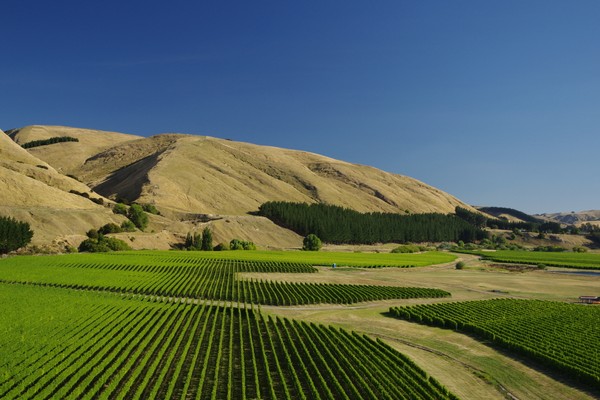
INTRODUCTION
I love New
Zealand Pinot Noir.
In this
abbreviated report, I'm not going to waste time discussing which
country makes the best Pinot Noir, or trying to draw parallels with
red Burgundy. Instead, I want to tell you about some of my favourite
wines. Iím a huge Pinot fan, and New Zealand is a happy hunting
ground for me. So this report is simply an expression of my
enthusiasm for some very nice wines.
The bulk of
the tasting notes here come from New Zealandís Pinot Noir
celebration in January 2013, but they have been supplemented by
notes from wines tasted elsewhere. Pinot Noir 2013 was a remarkable
event. Four days of immersion into Pinot Noir, great food, good
company, and a great city on its best behaviour, with almost
unheard-of wall-to-wall sunshine for a week.
THE FULL REPORT IS AVAILABLE TO PURCHASE

Wellington waterfront
Iíd been to
the previous event, in 2010, and that was great. But 2013 was
another level up. Instead of inviting foreign speakers to come and
tell New Zealand that they were doing quite well with Pinot Noir,
the organizers wisely decided that this time they would let the
wines speak. The main thrust of the four days was on letting each of
the regions tell their own story, and to give people time to taste,
taste and taste some more.
From my
perspective, as a visitor, this was just perfect. Iím not keen on
sitting through long talks, and panel tastings where you have six
glasses in front of you but it takes 90 minutes to get through them
because of all the chat. But give me a glass and a chance to taste
my way through a room full of Kiwi wine producers, and I'm very
happy indeed.
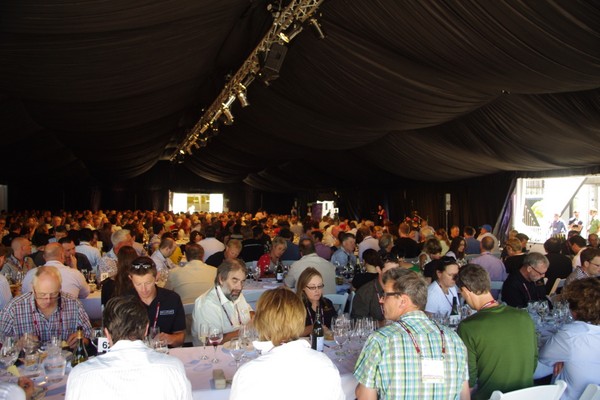
Food time at Pinot Noir 2013
Some notes on
my notes. Kiwi Pinot Noir is pretty consistent. I rarely taste a bad
one, and the overall standard is high. This leads to a lot of very
similar scores, for which I apologise. In part, this is because of
the limitations of the 100 point scale, which gets horridly
congested at the top end. So there is actually quite a bit of
difference between 91 and 94 points, or even between 93 and 95. I
would love for the scale to be used more fully, with an average wine
getting 60, and a good one 70, and so on, but I can't unilaterally
establish a scale of this breadth without confusing everyone who is
used to the Parker/Wine Spectator usage. And the 20 point scale as
used by Jancis Robinson and a few others suffers from similar
clustering at the high end. This clustering, together with the
consistently high quality of New Zealand Pinot Noir, does make the
scores bunch a bit in the 92Ė94 point zone. In my tasting notes I
have tried to indicate the style of the wine in words, but we suffer
with a lack of effective ways of communicating our flavour
perception in terms of language.
A
philosophical point is in order here. Scores are not the property of
a wine. It makes no sense to say, Ďthis is a 96-point wineí. A
score is the result of an interaction between a taster and a wine,
and the taster is an important part of the equation.
So no
100-point Pinots? I am wary of using scores that are too high.
I think New Zealand is making some great Pinot Noir, but I
think that some even better Pinots will be made here in the future
as vines get older and people learn more about what makes for a
special vineyard site. If as a critic you are already dishing out
98/99/100 point scores on a regular basis, where do you go then?

Some notable Pinot Noir 2013 attendees diving at the
waterfront

What
do I like in Pinot Noir? Questions of style
What do I like
in Pinot Noir? I look for a few things in a great Pinot. First of
all, that indefinable quality of elegance. I wish I could define
elegance in a wine, but I can't. I know it when I see it, though.
I want to be
charmed and seduced by a wine that has beauty. It can have power,
but that power has to be reined in and balanced by subtlety, too.
I look for
detail. I don't just want a wall of sweet fruit, but I want there to
be details in the wine: points of interest. Complexity, I guess.
Texture is so
important. Pinot Noir should have a smooth mouthfeel, and a bit of
mid-palate weight. I
have heard it suggested that one of the effects of Brettanomyces
(the spoilage yeast that affects too many red wines) is to use up
the little bit of sugar left after fermentation that Saccharomyces
cerevisiae (the main wine yeast) can't metabolize. This trace of
sugar helps give texture, and when it is stripped out, Pinot Noir
suffers. This is aside from the sensory impact of Brettanomyces.
Brett is a disaster in Pinot Noir, and so I prefer not to have any,
even though some people like the way it makes a wine more savoury.
Definition and
freshness are important in Pinot. There needs to be a brightness to
the wine.
Non-fruit
complexity is important. Fruit alone is not enough to make a truly
compelling wine. But that non-fruit character needs to be
appropriate: you don't want your Pinot to be angular or rustic.
I don't like
noticeable new oak in Pinot Noir, especially when it gives that
spicy, roast coffee character. It removes elegance.
In terms of
fruit, I like fresh, bright fruit characters, not over-ripe jammy
ones.
In terms of
colour, I would rather not have a deep coloured Pinot. Pale colour
can be a good thing. One of Pinots virtues is that it can be pale-coloured,
light bodied, and yet complex, full, aromatic and ethereal.
I love
perfumed Pinots, especially when fruit characters are joined by
floral and even subtle meaty notes.
Although my
preference is for more elegant, lighter Pinots, sometimes big ones
can work well. So I am open-minded. Rich Pinot can taste like
cool-climate Syrah, and I love cool-climate Syrah. Lighter, very
cool-climate Syrah shares a resemblance with Pinot Noir. The two
seem to have something in common.
It is all
about balance. The wine is a whole. And it's really difficult to
write tasting notes that are holistic rather than reductionist in
nature. A list of exotic fruits and spices is no use at all. That's
why the use of metaphor and even metonymy is important in describing
wine.
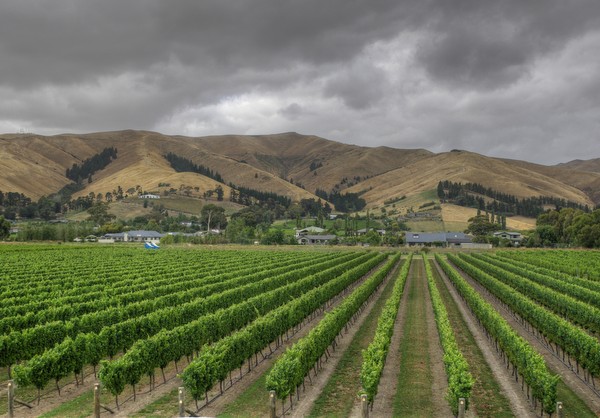
Marlborough
Regionality?
One of the
stories of New Zealand Pinot Noir is regionality. All regions in New
Zealand are turning out seriously interesting Pinot Noir, with the
possible exceptions of Hawkes Bay, Auckland and Waiheke Island. Can
you spot Pinot Noir from the different regions blind? This is
tricky. I donít think I can reliably, although this does depend on
the wine. Some taste more of their region than others.
Marlborough
is the really interesting story at the moment. It is the largest
wine region in New Zealand, and more Pinot Noir comes from here than
anywhere else. Yet until recently, it wasn't taken all that
seriously. Some of the wines were pretty ordinary, but there's now a
critical mass of serious Marlborough Pinot. The braided alluvial
terraces that make up much of the region aren't great for Pinot,
because you tend to get quite a bit of variation within the row. And
ripeness and under-ripeness in the same batch of grapes may be quite
interesting for Sauvignon Blanc, but it's bad news for Pinot Noir,
resulting in wines with a cherry cola sort of character (some
over-ripeness, some under-ripeness in the same wine). But the
clay-rich soils of the southern valleys are more homogeneous and
seem to be ideal for Pinot. The climate here is certainly ideal for
Pinot.
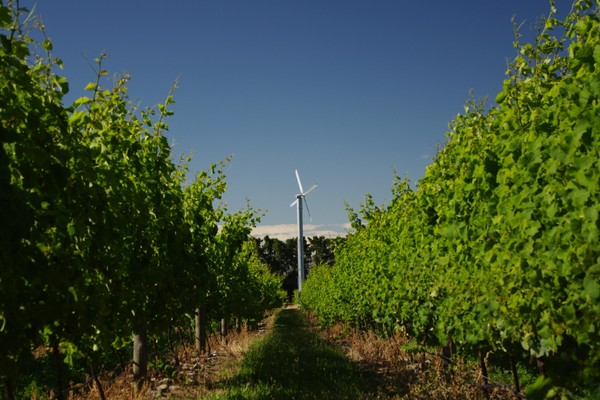
Waipara
Martinborough and the wider Wairarapa area
is a Pinot hot spot. This is home to some of the country's top
examples, and it's a Pinot-dominated region. It typically makes
Pinots that are quite big in size, with ripe dark cherry fruit. They
can get a bit too rich sometimes, but overall there's a lot of Pinot
fun to be had here.
Waipara
is one of the leading Pinot areas in New Zealand. The climate here
is cool and variable, but it's worth the risks incurred by growers,
because when it's good it's brilliant. I'm including here the
pioneering wineries of the north Canterbury hills.
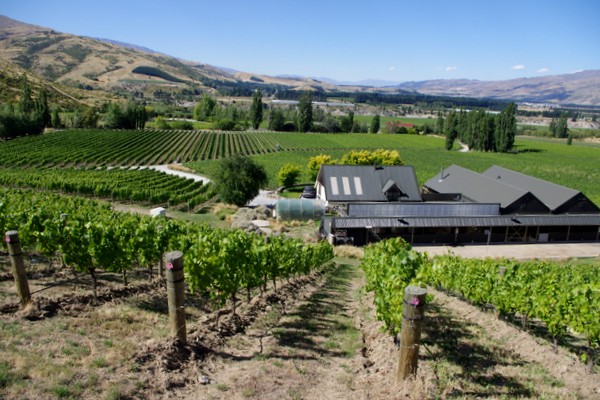
Central Otago
Central Otago is rightly famous as a specialist Pinot Noir region. From a standing
start just a couple of decades ago, it has grown rapidly into one of
the country's top Pinot regions. The standard of Central Otago Pinot
is remarkably high, and this is now home to some of the top examples
of this super variety. It's a rugged, visually striking region, and
I'm fascinated by how the place and the wines seem to share
something in common. And I just love this quote, which Rob Hay of
Chard farm attributes to a New Zealand wine writer, made in the
early 1990s: ĎIf Central Otago wine producers think they can
produce premium quality wine, they are seriously deluding
themselves.í Classic.
Nelson
is a small, friendly wine region, and seems to have a talent for
quite a few different varieties. Pinot Noir is one of these. The
quality varies a little, but the best ones are peers with New
Zealandís best.
For
tasting notes and scores, click below:
NEW
ZEALAND'S TOP PINOT NOIRS
Wines
tasted 01/13
Find these wines with wine-searcher.com
Back
to top
|

